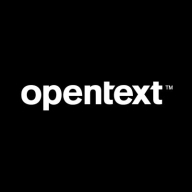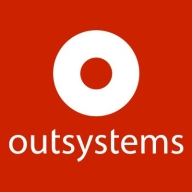

Find out in this report how the two Business Process Management (BPM) solutions compare in terms of features, pricing, service and support, easy of deployment, and ROI.
| Product | Market Share (%) |
|---|---|
| OpenText Process Automation | 0.7% |
| Camunda | 14.0% |
| SAP Signavio Process Manager | 5.7% |
| Other | 79.6% |
| Product | Market Share (%) |
|---|---|
| OutSystems | 7.5% |
| Microsoft Power Apps | 12.7% |
| Appian | 8.4% |
| Other | 71.4% |


| Company Size | Count |
|---|---|
| Small Business | 7 |
| Large Enterprise | 3 |
| Company Size | Count |
|---|---|
| Small Business | 18 |
| Midsize Enterprise | 7 |
| Large Enterprise | 29 |
OpenText Process Automation offers a low-code environment for efficient development, enhanced by strong integration, dynamic case management, and OCR technology to streamline business processes across industries.
OpenText Process Automation provides a comprehensive platform for improving business processes with features that allow for significant time reduction through a low-code development environment. It integrates seamlessly with third-party systems, enabling dynamic case management and effective monitoring capabilities. By incorporating OCR technology, it enhances efficiency and lowers costs. Users benefit from its centralized architecture, which brings together diverse tools to streamline operations. Its BPM modules support automation in supply chain and vendor processes, leading to widespread implementation. Known for its stability and scalability, it also receives positive feedback for its reliable support. However, there are areas needing enhancement, such as improved low-code features, better integration, and a desire for a unified UI with better mobile compatibility. There is a call for an archival function to address database growth and concerns about pricing and performance related to the BPMN 2.0 model. Potential improvements include AI integration and enhanced modeling in the low-code platform.
What are the key features?OpenText Process Automation is implemented in industries like insurance, banking, and manufacturing for tasks such as invoice processing, accounts payable, cash management, and supply chain automation. It enables integration with systems like SAP and Salesforce, offering on-premises or cloud deployment, enhancing workflows and document orchestration.
OutSystems is a platform for low-code application development that unites design, code, and deployment to simplify development so any business can create innovative solutions in a timely manner. There are various use cases an organization can employ with OutSystems, including:
OutSystems offers faster development and deployment times than hand-coding while delivering unique and personalized solutions to its customers. The main focus of OutSystems is high-performance low code which enables businesses to create functional products that answer their needs. It offers clients the ability to develop enterprise-grade applications with a high level of security.
The product stands out from its competitors as it offers:
It ensures its clients that the applications built using this platform are as scalable as hand-coded ones while increasing workspace productivity and evolving applications’ capabilities.
OutSystems Features
OutSystems has various features through which users can develop and deploy highly efficient applications and other products. Some of the features include:
OutSystems Benefits
The solution offers a wide array of benefits to companies that utilize it in their application development. Some of these benefits include:
Reviews from Real Users
Harikrishnan R., a technical lead at Netlink Software Group America Inc, likes OutSystems because the tool helps with validation, offers good features, and is reliable.
An owner at a consultancy thinks OutSystems is versatile with great scalability and great technical support.
We monitor all Business Process Management (BPM) reviews to prevent fraudulent reviews and keep review quality high. We do not post reviews by company employees or direct competitors. We validate each review for authenticity via cross-reference with LinkedIn, and personal follow-up with the reviewer when necessary.